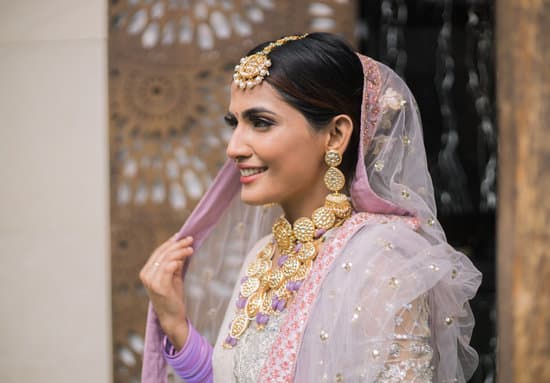What goes on first engagement or wedding ring? The significance of these rings goes beyond their physical presence. They symbolize love and commitment between partners, representing a lifelong bond and the promise of a future together. In this article, we will explore the history, distinction, placement, meaning and symbolism, etiquette, and personal choice related to engagement and wedding rings.
Engagement and wedding rings have a rich history dating back centuries and are deeply rooted in various cultural traditions. These rings hold symbolic meanings that transcend time and continue to be an important part of modern relationships. The distinction between engagement and wedding rings is also significant, with each type serving a specific purpose in the journey towards marriage.
Traditionally, there are specific customs associated with the placement of engagement and wedding rings on the finger. However, as times change, so do trends in ring placement. Couples today have numerous choices when it comes to how they wear their rings – from stacking them to wearing them on separate fingers. This evolution reflects how individual preferences have evolved over time.
Ultimately, the decision on which ring goes on first is not predetermined by rules or regulations; rather, it is influenced by personal choice and individual style. Understanding the significance of these rings can help couples make an informed decision that holds personal meaning for both partners.
History of Engagement and Wedding Rings
Engagement and wedding rings hold tremendous significance in the context of love and commitment, symbolizing a couple’s enduring bond and lifelong partnership. The act of presenting a ring as a token of affection and commitment dates back centuries, with each type of ring holding its own unique history and symbolism.
The tradition of giving engagement rings can be traced back to ancient Rome, where women were given two rings – one gold band to wear in public and an iron band to wear at home. The iron band symbolized an unbreakable union, while the gold band represented wealth and social status. This practice evolved over time, with the diamond becoming a popular choice for engagement rings in the 20th century due to its durability and brilliance.
On the other hand, wedding rings have historically been exchanged as a symbol of unity during marriage ceremonies. The circular shape of the ring represents eternity and the never-ending love between spouses. It is believed that the tradition of wearing wedding bands on the fourth finger of the left hand originated from the ancient Egyptians, who believed that a vein ran directly from this finger to the heart.
Both types of rings carry deep symbolic meanings that have been passed down through generations, representing love, commitment, and fidelity. Understanding the historical origins of engagement and wedding rings provides insight into their enduring significance in contemporary society, shedding light on why these pieces of jewelry hold such sentimental value for couples today.
Distinction Between Engagement and Wedding Rings
Engagement and wedding rings both hold significant symbolism in the context of love and commitment. They are a tangible representation of a couple’s dedication to each other, marking important milestones in their relationship. However, it is important to note that there are distinct differences between the two types of rings, not only in terms of design but also in their purpose.
The engagement ring is typically given at the time of a marriage proposal, symbolizing the promise of a future together. It is often adorned with a center stone, such as a diamond, and may feature intricate details or embellishments. On the other hand, the wedding ring is exchanged during the marriage ceremony itself and is usually a plain metal band. It represents the formal union and commitment made between two individuals.
When it comes to design, one key difference lies in the level of embellishment and intricacy. Engagement rings are often more elaborate in their design, featuring eye-catching settings and stones. Wedding rings, on the other hand, tend to be simpler and more understated, focusing on durability and comfort for everyday wear.
In terms of purpose, the engagement ring serves as a symbol of intention and promise for the future, while the wedding ring represents the formalization of marriage vows. This distinction highlights the unique significance each type of ring holds in commemorating different stages within a couple’s journey together.
- Engagement rings are typically given at the time of a marriage proposal
- They often feature center stones such as diamonds
- Wedding rings are exchanged during the marriage ceremony itself
- They tend to be simpler and more understated than engagement rings
Traditional Placement of Engagement and Wedding Rings
Engagement and wedding rings have long been symbols of love, commitment, and the promise of a lifelong partnership. The tradition of wearing these rings dates back centuries, and the significance of their placement on the finger has been a topic of cultural and personal importance. In many cultures, there are specific customs and beliefs regarding which ring goes on first.
In most Western traditions, the engagement ring is typically worn closer to the heart, on the fourth finger of the left hand. When it comes time for the wedding ceremony, it is then moved to make room for the wedding band during the exchange of vows. This practice is rooted in the belief that there is a vein in that finger that leads directly to the heart, symbolizing a direct connection between love and commitment.
The wedding ring is placed on top of or beside the engagement ring as a sign of sealing the marriage vows. It also serves as a physical representation of unity and partnership within marriage. However, it is important to note that there are variations in these traditions based on individual beliefs, family customs, or cultural influences.
For example, some cultures have different traditions around which hand or finger should be used for engagement and wedding rings. In Eastern European countries like Russia and Ukraine, it’s more common to wear both rings on the right hand. Meanwhile in some Asian countries such as India or Indonesia, couples may choose to wear their rings on their right hands before marriage and move them to their left after tying the knot.
| Traditional Placement | Cultural Variations |
|---|---|
| In Western traditions engagement ring goes first. | Eastern European countries wear both rings on right hand. |
| Wedding band goes next with cultural influence from Asia. | Couple from Asia choose right hand before moving to left once married. |
Modern Trends in Ring Placement
In modern times, the placement of engagement and wedding rings has evolved from traditional customs, leading to unique and personal choices for contemporary couples. The conventional belief is that the engagement ring should be placed on the finger first, followed by the wedding ring; however, many couples are embracing new trends that allow them to express their individual style and preferences.
One popular trend among modern couples is the concept of “ring stacking.” This involves wearing both the engagement and wedding rings on the same finger, creating a layered or stacked effect. By doing so, individuals can showcase both rings simultaneously while creating a stylish and personalized look. Some may even choose to add additional bands or eternity rings to further enhance the stacked appearance.
Another trend that has gained popularity in recent years is wearing the engagement and wedding rings on separate fingers. This contemporary approach allows each ring to be prominently displayed and appreciated individually. It also reflects a shift towards prioritizing personal comfort and aesthetics, as individuals are free to experiment with different placements based on their own preferences.
Furthermore, some couples opt for unconventional methods such as alternating between fingers or occasionally swapping the placement of their engagement and wedding rings. This fluid approach exemplifies how modern attitudes towards tradition have resulted in a greater sense of freedom in expressing love and commitment through ring placement.
Ultimately, these modern trends reflect an evolution in how couples choose to wear their engagement and wedding rings, highlighting individuality and creativity while still symbolizing love and commitment.
| Engagement Ring Placement Trends | Key Points |
|---|---|
| Ring Stacking | Couples can create a layered effect by wearing both rings on the same finger. |
| Separate Finger Placement | Many individuals choose to wear their engagement and wedding rings on different fingers for a personalized look. |
| Fluid Approaches | Some couples alternate between fingers or swap placements as an expression of modern attitudes towards tradition. |
Meaning and Symbolism
Engagement and wedding rings hold a deep symbolic significance in the context of love and commitment. They are powerful symbols of a couple’s commitment to each other and their intention to spend the rest of their lives together. The way these rings are worn also carries meaning, reflecting the progression of the relationship from engagement to marriage.
Wearing the Engagement Ring First
Traditionally, the engagement ring is worn first, closest to the heart. This placement symbolizes the beginning of the couple’s journey together, marking the moment when they decided to take their relationship to the next level. The engagement ring represents a promise and a commitment to future nuptials. It serves as a public declaration of their intention to marry and signifies that they are off the market.
Wearing the Wedding Ring First
On the other hand, some couples choose to wear their wedding ring first as a reflection of its role as a symbol of unity and eternal love. Wearing it before the engagement ring can represent that at this point in time, both individuals have already committed themselves entirely and permanently to each other. Some may also argue that wearing the wedding band first symbolizes that marriage is a priority over engagement.
Ultimately, whether you choose to wear your engagement ring or wedding ring first is a personal decision with no right or wrong answer. It is important for couples to discuss this matter and come to an agreement based on what feels right for them. At its core, what matters most is the symbolism behind these beautiful rings and what they mean for each individual’s relationship journey.
Etiquette and Cultural Differences
In many cultures around the world, the exchange and wearing of engagement and wedding rings hold deep cultural and symbolic significance. The order in which these rings are worn can vary widely based on traditions, customs, and beliefs. Understanding the etiquette and cultural differences related to wearing engagement and wedding rings is essential for couples who want to honor their heritage or incorporate multicultural elements into their nuptials.
Western Traditions
In Western cultures, it is customary for the engagement ring to be worn on the fourth finger of the left hand, followed by the wedding ring during the marriage ceremony. This tradition is commonly attributed to the ancient belief that there is a vein in this finger that leads directly to the heart, symbolizing love and commitment.
Eastern Traditions
In contrast, Eastern cultures such as those in India and China often have different customs regarding ring placement. In India, it is common for brides to wear their engagement ring on the right hand’s fourth finger before moving it to the left hand after marriage. Similarly, Chinese tradition dictates that couples wear their wedding bands on their right hands during the ceremony before switching them to their left hands afterwards.
Middle Eastern Traditions
Middle Eastern cultures may also have unique practices associated with engagement and wedding rings. For example, some regions adhere to a tradition where both men and women wear matching engagement rings rather than just one partner receiving a ring. Furthermore, there may be specific guidelines regarding which hand or finger these rings are worn on for each gender.
Understanding these diverse cultural practices is crucial for creating a meaningful and respectful approach when exchanging and wearing engagement and wedding rings. It allows couples to embrace traditions from various backgrounds while celebrating their love and commitment in a way that speaks to their unique cultural heritage. By recognizing these differences, individuals can create a thoughtful representation of not only themselves but also of the diverse cultures that contribute to their identity.
Personal Choice and Individual Preferences
When it comes to the decision of which ring goes on first, whether it’s the engagement or wedding ring, it ultimately boils down to personal choice and individual preferences. There are no set rules that dictate the specific order in which these rings should be worn, and couples have the freedom to decide based on what holds significance for them. Here are some factors to consider when making this personal choice:
1. Symbolism: For some individuals, the symbolism behind wearing the engagement ring first holds great importance. The engagement ring symbolizes the beginning of a lifelong commitment, and wearing it first can signify the start of this journey towards marriage.
2. Tradition: While there are traditional customs regarding the placement of engagement and wedding rings, modern couples have the flexibility to interpret and adapt these traditions to suit their own preferences. Some may choose to adhere to traditional practices, while others may opt for a different approach based on their personal beliefs.
3. Cultural Differences: Different cultures have varying beliefs and customs related to wearing engagement and wedding rings. In some cultures, there may be specific significance attached to wearing one ring before the other, so it’s important for individuals to consider their cultural background when making this decision.
Ultimately, the decision on which ring goes on first is a deeply personal one that should be based on individual preference and style. Whether a couple chooses to follow tradition, prioritize symbolism, or embrace modern trends, what matters most is that the rings hold meaning and significance for both partners as they embark on their journey towards marriage.
Conclusion
In conclusion, the debate over what goes on first, the engagement or wedding ring, is ultimately a personal choice. While tradition and cultural customs play a significant role in ring placement, modern couples are increasingly embracing individual preferences and personal meaning when making this decision. The symbolism behind wearing the engagement or wedding ring first is deeply personal and can reflect the unique journey of each relationship.
As we have explored throughout this article, the history and symbolism of engagement and wedding rings are rich and diverse. From ancient traditions to modern trends, there is no one-size-fits-all answer to the question of which ring goes on first. Couples are encouraged to consider their own values, beliefs, and relationship dynamics when making this decision.
Ultimately, whether you choose to follow tradition or forge your own path, the most important aspect of wearing an engagement or wedding ring is the love and commitment it represents. Each couple has the freedom to decide what works best for them when it comes to wearing these meaningful symbols of love and partnership.
Frequently Asked Questions
Which Goes on First Wedding and Engagement Ring?
Traditionally, the wedding band is worn on the bottom, closest to the heart, and the engagement ring is worn on top. The wedding band symbolizes the eternal bond of marriage.
Is the Wedding Band on Top or Bottom?
The wedding band is typically worn on the bottom, closer to the palm, while the engagement ring is placed on top. This positioning allows both rings to be showcased without causing any discomfort.
What Is the Correct Way to Wear Your Wedding Band and Engagement Ring?
The correct way to wear your wedding band and engagement ring is with the wedding band placed first, nearest to your palm, followed by the engagement ring on top. This order signifies the commitment made during marriage.

I have been involved in marriages for over 20 years helping couples and singles understand more about them.





